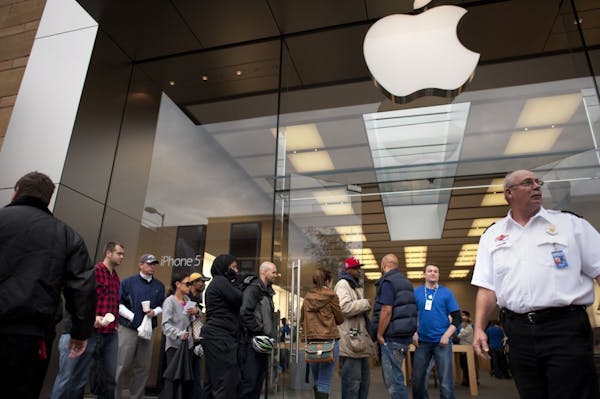The first iPhone 5 reviews are in. And they liked it, they really liked it.
"Finally, the iPhone we've always wanted," hails CNET, "in a top-to-bottom redesign that is sharp, slim and feather-light."
"Apple has chiseled the smartphone to near-perfection," froths MG Siegler of Techcrunch.com.
"Apple has taken an already great product and made it better, overall," sayeth Wall Street Journal's Walt Mossberg. "Consumers who prefer huge screens or certain marginal features have plenty of other choices, but the iPhone 5 is an excellent choice."
All three reviewers had almost a week to play with the new Apple phone, ahead of Friday's launch. Siegler suggests early grumblings about the iPhone 5's "disappointing" nature came from headline seekers who only had the device in their grubby hands for a few minutes at the product's press conference introduction.
On the other hand, let us point out that Apple clearly courts media favorites, lays those precious few review phones on guys like Mossberg (a longtime personal friend of the late Steve Jobs) who then will be grateful for a "scoop" and less likely to find fault. These first reviews don't just give the iPhone 5 high points, they tsk-tsk us poor, out-of-luck iPhone 4S customers who still have time to run on our contracts and pitch the 5 as the best next phone for Android and Windows phone users, too. A marketing department dream.
Here's what to like
So what did the reviewers like best about the iPhone 5?
First, that it's a better pocket pal -- slimmer, lighter and no wider than its predecessor and just a tad longer to accommodate a half-inch bigger, but just as sharp 4-inch screen. Mossberg poo-poos bigger screened Android phones for being less comfortable to grip.
The iPhone 5's extra screen space does throw more of e-mails or an extra row of app icons onto the display. And lets 16-by-9 movies run "full screen" without letterboxing. There aren't many apps yet optimized for the bigger display -- forcing almost all to be letterboxed, ironically. That will change.
Mossberg says "the biggest functional improvement in this iPhone ... is speed" -- thanks to the new gen mobile phone's ability to run on the latest LTE networks from Verizon, AT&T and Sprint. On the Verizon LTE networks he encountered in "Silicon Valley" and Washington, D.C., Walt averaged "almost 26 megabits per second for downloads and almost 13 megabits per second for uploads. ... These speeds are more than 10 times the typical speeds I got on an iPhone 4S running Verizon's slower 3G network and are faster than most Americans' home Internet services."
The Techcrunch tester in New York City on Verizon "regularly achieved speeds around 20 Mb/s down and 4 Mb/s up. ... The only downside I can see to Verizon is that you still cannot talk on the phone and use data at the same time. The same is true for Sprint. AT&T does allow this."
The slimmed down yet still 8 MP camera was universally praised for better low-level light performance.
On sheer phone performance, the new noise-cancelling microphones have apparently helped some with call clarity, said the earliest adopters, but have not made the voice-activated Siri assistant any more responsive with the new, just launching iOS 6 operating system.
Mixed on navigation system
Reviewers were mixed on the Apple travel navigation system, which replaces Google's. At least there now are turn-by-turn voice cues, previously available only on the Android version of Google Maps. But users of Apple's own nav system don't get street views of locations, a Google exclusive.
Where I thought the reviewers bent most to Apple's will, giving iPhone 5 designers a free pass, were in discussions of the new smaller multi-pin connector on the phone and the absence of NFC (near-field communication) technology.
Yes, the new connector is bi-directional and won't collect as much pocket lint, but will require a new breed of accessories or at least an extra adaptor to function with most (and not necessarily all) of your older charging cables and power stations, speaker docks, etc. That little adaptor costs a whopping $29. Apple should be throwing one in the box with the iPhone 5 for free.
Mossberg discounts the value of NFC technology missing on the iPhone 5 but found on many Android phones. He argues that NFC hasn't been adopted widely -- therefore isn't important -- yet ignores NFC's vast potential as an electronic wallet replacing your charge cards, trans-pass, office access card and such.
Cristian Măcelaru to become music director of Cincinnati Symphony Orchestra in 2025-26
Italy bans loans of works to the Minneapolis Institute of Art in a dispute over an ancient statue

